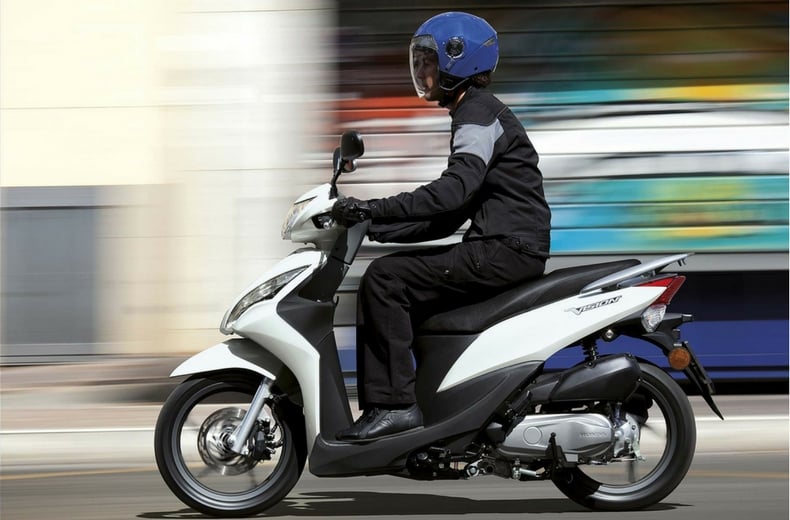If you have a newer vehicle, you can also look up the emissions standard of your car and get a free vehicle valuation at the same time, courtesy of RAC Cars (your emission standard will appear at the end of the car description as part of the final step of your car valuation, indicated by the letters 'EU' in front of it).
Each Euro emission standard: a full breakdown
To find out what the different criteria cars have to hit to meet their Euro standard we have outlined each of the standards below.
Euro 1 (EC93)
Implementation date (new approvals): 1 July 1992
Implementation date (all new registrations): 31 December 1992
The first Europe-wide euro emissions standards were introduced in July 1992 and the regulations weren’t anywhere near as stringent as they are today. That said, the fitment of catalytic converters became compulsory on all new cars, and Euro 1 required the switch to unleaded petrol.
Back then, only hydrocarbons and nitrogen oxide were tested, along with particulate matter in the case of diesel engines. Over the years, the regulations have become stricter and the limits lowered.
Euro 1 emissions standards (petrol)
CO: 2.72g/km
HC + NOx: 0.97g/km
Euro 1 emissions standards (diesel)
CO: 2.72g/km
HC + NOx: 0.97g/km
PM: 0.14g/km
Euro 2 (EC96)
Implementation date (new approvals): 1 January 1996
Implementation date (all new registrations): 1 January 1997
Euro 2 reduced the limits for carbon monoxide and the combined limit for unburned hydrocarbons and nitrogen oxide, as well as introducing different levels for petrol and diesel engines.
Euro 2 emissions standards (petrol)
CO: 2.2g/km
HC + NOx: 0.5g/km
Euro 2 emissions standards (diesel)
CO: 1.0g/km
HC + NOx: 0.7g/km
PM: 0.08g/km
Euro 3 (EC2000)
Implementation date (new approvals): 1 January 2000
Implementation date (all new registrations): 1 January 2001
Euro 3 split the hydrocarbons and nitrogen oxide limits for petrol and diesel engines, as well as adding a separate nitrogen oxide limit for diesel vehicles. The warm-up period was removed from the test procedure.
Euro 3 emissions standards (petrol)
CO: 2.3g/km
THC: 0.20g/km
NOx: 0.15g/km
Euro 3 emissions standards (diesel)
CO: 0.66g/km
HC + NOx: 0.56g/km
NOx: 0.50g/km
PM: 0.05g/km
Euro 4 (EC2005)
Implementation date (new approvals): 1 January 2005
Implementation date (all new registrations): 1 January 2006
Euro 4 emissions standards (petrol)
CO: 1.0g/km
THC: 0.10g/km
NOx: 0.08g/km
Euro 4 emissions standards (diesel)
CO: 0.50g/km
HC + NOx: 0.30g/km
NOx: 0.25g/km
PM: 0.025g/km
Euro 5
Implementation date (new approvals): 1 September 2009
Implementation date (all new registrations): 1 January 2011
The big news for Euro 5 was the introduction of particulate filters (DPFs) for diesel vehicles, along with lower limits across the board. For type approvals from September 2011 and new cars from January 2013, diesel vehicles were subject to a new limit on particulate numbers.
DPFs capture 99% of all particulate matter and are fitted to every new diesel car. Cars meeting Euro 5 standards emit the equivalent of one grain of sand per kilometre driven.
Euro 5 emissions standards (petrol)
CO: 1.0g/km
THC: 0.10g/km
NMHC: 0.068g/km
NOx: 0.06g/km
PM: 0.005g/km (direct injection only)
Euro 5 emissions standards (diesel)
CO: 0.50g/km
HC + NOx: 0.23g/km
NOx: 0.18g/km
PM: 0.005g/km
PN [#/km]: 6.0x10 ^11/km
Euro 6
Implementation date (new approvals): 1 September 2014
Implementation date (all new registrations): 1 September 2015
The sixth and current incarnation of the Euro emissions standard was introduced on all new registrations in September 2015. For diesels, the permitted level of NOx has been slashed from 0.18g/km in Euro 5 to 0.08g/km.
A focus on diesel NOx was the direct result of studies connecting these emissions with respiratory problems.
To meet the new targets, some carmakers have introduced Selective Catalytic Reduction (SCR), in which a liquid-reductant agent is injected through a catalyst into the exhaust of a diesel vehicle. A chemical reaction converts the nitrogen oxide into harmless water and nitrogen, which are expelled through the exhaust pipe.
The alternative method of meeting Euro 6 standards is Exhaust Gas Recirculation (EGR). A portion of the exhaust gas is mixed with intake air to lower the burning temperature. The vehicle’s ECU controls the EGR in accordance with the engine load or speed.
Euro 6 emissions standards (petrol)
CO: 1.0g/km
THC: 0.10g/km
NMHC: 0.068g/km
NOx: 0.06g/km
PM: 0.005g/km (direct injection only)
PN [#/km]: 6.0x10 ^11/km (direct injection only)
Euro 6 emissions standards (diesel)
CO: 0.50g/km
HC + NOx: 0.17g/km
NOx: 0.08g/km
PM: 0.005g/km
PN [#/km]: 6.0x10 ^11/km
MORE ADVICE: Petrol or diesel? Facts and quiz to help you choose
What next?
While vehicle emissions have reduced, the so-called ‘dieselgate’ scandalhighlighted that there’s still work to be done, not least because carmakers felt the need to ‘cheat’ to meet the stringent standards.
In light of the use of ‘defeat devices’, the EU is introducing a ‘Real Driving Emissions’ (RDE) test procedure, starting from 1 September 2017. It is hoped that this will better reflect the actual emissions on the road, reducing the discrepancy between real-world emissions and those measured in a laboratory.
Although the UK is negotiating its exit from the European Union, the emissions standards are expected to remain unchanged. One thing’s certain: cars are easy to regulate, so we can expect stricter euro emissions standards over the coming years.
Keep up to date with the latest air quality news
Motorbike Euro emission standards

The Euro emissions standards for motorbikes are slightly different from cars, with fewer new standards having been introduced over the years (due to motorbikes emitting less emissions than cars and other larger vehicles do).
Currently new motorbikes are regulated at a Euro 4 standard with Euro 5 due to be introduced in January 2020.
The implementation of emission standards for motorbikes is also a little more complicated than the standards for cars.
Motorbike emission regulations for Euro 1 to 3